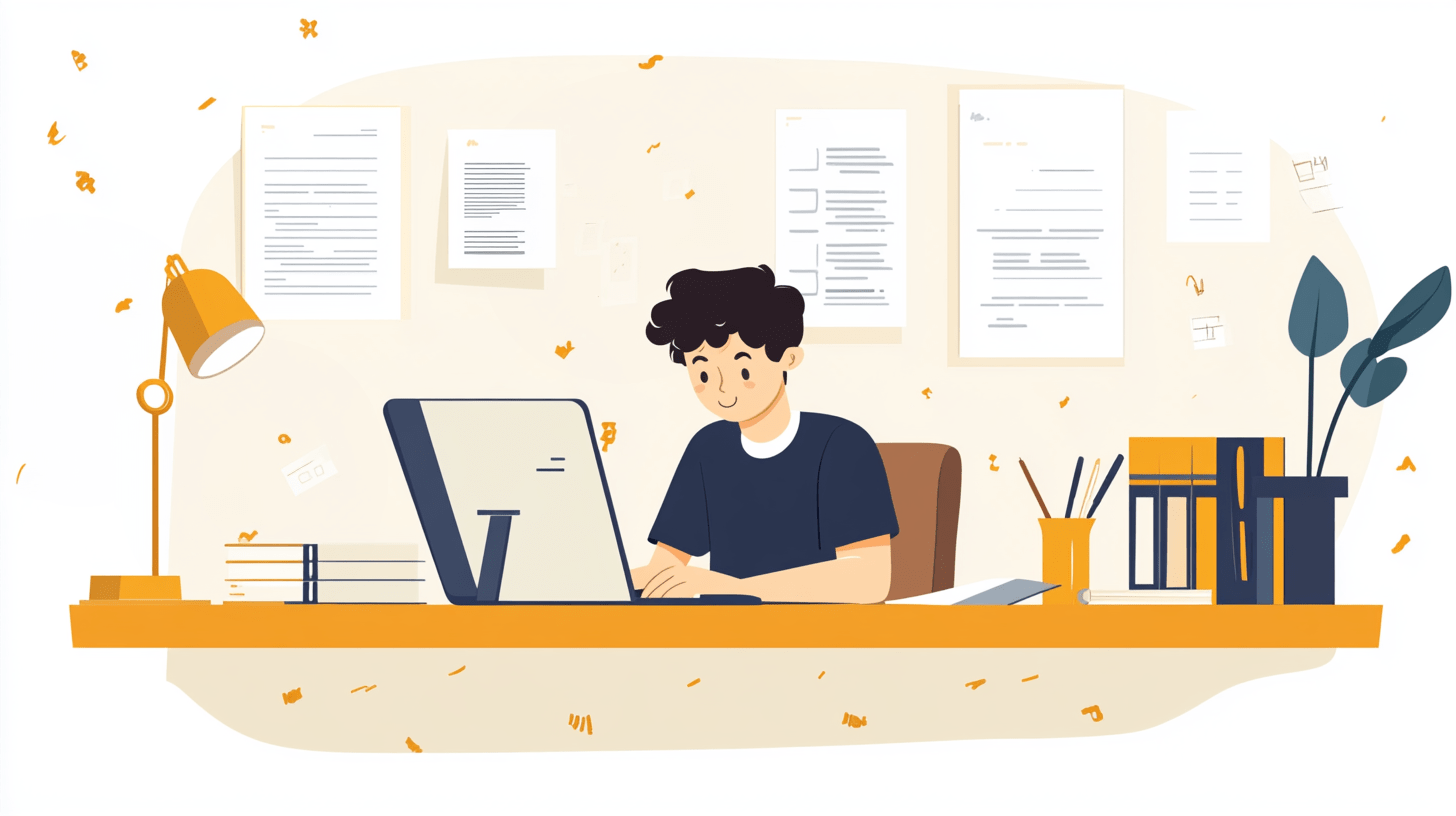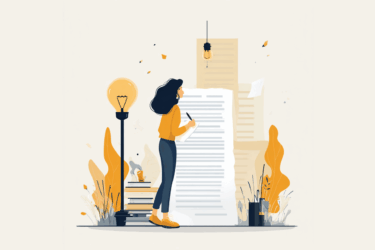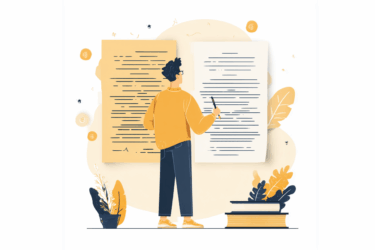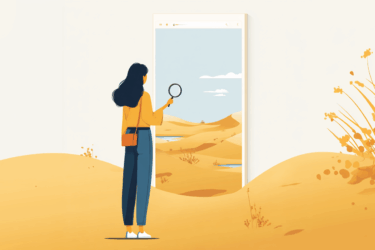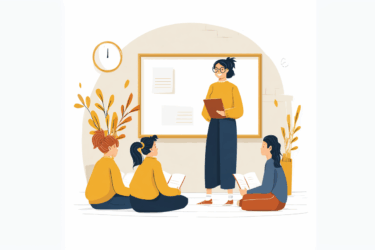Why does my paper sound like AI? If you have ever wondered this question you have probably faced an unpleasant, to say the very least, situation when your teacher insists your paper was AI-generated and refuses to believe otherwise. How can that happen and, most importantly, what can one do to steer clear of such accusations? Let’s look into how teachers check “did AI write this paper” and ways to prevent AI abuse-related issues.
What is AI cheating
AI cheating happens when someone generates a piece of content with a chatbot and passes it for their own effort.
It doesn’t mean AI tools are a no-go in academic or creative work. While being beneficial for boosting creativity and accelerating routine tasks, the AI model, however, shouldn’t be delegated the whole assignment, especially when it comes to studying. Unless one is specifically given the task of producing a text involving AI, using a chatbot to write the paper violates academic integrity and entails repercussions.
The same applies to the media and creative domain: while AI tools are widely used for generating content, each piece should be marked as AI output not to be confused with human-crafted.
Why AI abuse is a problem
AI technologies have become a challenge for education, media, creative domain, and business. While the policies regarding AI tools are still to be introduced, developed, and regulated, several rules need to be taken into account while crafting an academic assignment or creative piece.
- AI tools should never be asked to generate an assignment instead of the student unless it’s required by the task. Doing so is considered one of the severest violations of academic honesty rules and entails repercussions.
- AI output should never be passed for human authentic work. Whenever AI tools are involved, a clear disclaimer should be placed to inform the audience that the presented content is produced by an AI model.
Why do we need these policies, and what potential dangers does AI misuse have that some educational institutions even ban AI technologies from being used within their walls?
- Passing AI output for an authentic effort is unethical and misleading to the audience, who deserve to know the real author behind any content piece.
- Generating assignments with an AI model violates academic integrity, as the aim of the writing task is to check the students’ knowledge, highlight the room for improvement, and motivate them to boost their skills.
- AI cheating hinders development and harms the person who abuses technologies, as they miss out on opportunities to reflect on material, develop critical thinking, and learn something new.
- AI abuse is disrespectful towards educators, who invest their time and energy into checking assignments and providing feedback to the students in order to help them grow.
- AI output can be misleading, as AI models are trained on massive amounts of data published online, and as we know the Internet is full of fake news and biased judgments. Hence, relying on information provided by the chatbot can distort the facts and make one jump to the wrong conclusions.
What is AI plagiarism
It is no secret that educators use plagiarism checker online to ensure that students don’t copy their assignments but write texts by themselves. Meanwhile, it may be not obvious that an AI-generated paper can lead one into plagiarism-related trouble. How so?
The reason is AI tools do not generate material from scratch. Their output is based on the data the model has been trained at, plus the new models use the data available online at the moment of the user’s request. It means the output uses someone else’s work without acknowledging the sources, which is plagiarism by definition. While one can ask to provide the original authors of the information, the output is not always correct: AI chatbots tend to name non-existent sources, which, in case of being included in the reference list, also counts as plagiarism.
So, if you are asking yourself “does my essay sound like AI”, you should be also aware of the risk of the paper being detected as plagiarised even if the chatbot’s output sounded original.
Did AI write this paper? How teachers check
To protect academic integrity, teachers want to ensure the papers they check are an original and authentic effort. Relying on their own expertise, educators also automate routines using plagiarism and AI essay checker. The tool shows the probability of the text being AI-generated, distinguishing between robot output and human writing, and can even highlight the parts that don’t sound authentic. So, whenever your paper or part of it sounds suspicious, the teacher will be warned and will pay closer attention to the flagged extracts.
How AI detectors work
AI checkers are trained on robot-generated and human-written texts so they know the features characteristic of AI output and human writing. One of the main factors the detectors consider is the creativity/predictability ratio. The way AI models are trained teaches them to use the most appropriate word for the given context. It makes AI writing more predictable than humans’, where creativity can’t be measured or calculated.
Besides, AI checkers analyze the writing style, syntax, word usage, and other parameters that are distinctive for chatbot output and human writing–for example, AI-produced text tends to sound monotonous due to its structure and includes specific words.
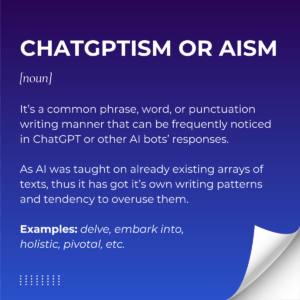
That being said, it is important to understand that AI models improve with time and learn to write more and more imitating the humans’ tone of voice. AI detection tools evolve along with technologies, however, false-positive results still happen.
Why does my essay sound like AI to detector
So, it is possible that you have written a text from scratch, but your teacher accuses you of using AI and provides proof by showing you the AI detection results. Why can that happen?
AI models are imperfect, and so are AI detectors. Sometimes they give false-positive results mistaking human-written text for AI-generated, especially if it has AI-alike features. For example, if the text’s lexicon is limited, the structure is monotonous, the paper includes lots of scientific terms, and the language is dry, the checker may categorize the paper as most probably AI-generated.
As the AI issue is relatively new to educational institutions, many professionals are still finding their way of implementing the novel tools. Although many tend to perceive AI checkers’ results as the ultimate truth, in reality, AI detection shows the extent of the probability of the text being AI-produced or human-crafted based on how close it is to the relevant parameters. Therefore, an AI detection report is meant to be a guide and prompt to pay attention to the questionable parts of the text, not making the final judgment.
How to prevent AI abuse accusations
You can hardly influence the way the teacher checks and judges your paper. But you can prepare it for evaluation by minimizing the risk of cheating accusations. In this context, the idea to “run my essay through AI detector” before submitting it to the teacher can be lifesaving.
- First of all, ensure your paper is truly authentic. It means crafting it from scratch, correctly attributing the sources you use, and implementing AI tools only for reference or brainstorming instead of making the work instead of you.
- Double-check the bibliography, because if you include the source in the reference list but do it inappropriately, it will be considered plagiarism. Remember that you can credit the AI model as a source if you’ve got information from there.
- Fact-check the chatbot’s output as it’s not always accurate. If you are allowed to implement AI tools for assistance–brainstorming, exemplification, or experimenting with style, make sure you confirm all information it provides is correct. The same applies to the sources–if the AI model provides you with the original author of the data it has given to you, find it by yourself to make sure it exists and contains the mentioned information before including it in your reference list.
- Safeguard your mark and reputation by checking the assignment for plagiarism. Even when you write text by yourself and don’t copy a single sentence, unintentional plagiarism, when you repeat someone’s ideas by coincidence, happens more often than one can imagine. Better be safe than sorry, as accidental plagiarism also counts as cheating. If you check your assignment for similarities before submission, you get a chance to edit the problematic parts or credit the sources, avoiding plagiarism repercussions.
- Finally, scan your essay for AI traces. If you are wondering “is there an AI checker for essays” that suits students’ needs, try one of the AI detection tools before sending your work to the teacher and see how it helps to feel more confident about your work. AI checker will highlight the parts that may sound suspicious, probably AI-alike, so you can predict the result the teacher gets by scanning your work for AI abuse, and then edit the problematic extracts, ensuring fair results.
Okay, you would day. I have run my essay through AI detector, and it highlights that some parts sound like generated by a chatbot. What should I do?
First and foremost, take a deep breath and don’t panic. Look at the flagged extracts and analyze them. What can it be about the language and structure that sounds a bit robotic? Then paraphrase the text so it sounds more natural. Check it again and edit one more time if needed.
What to do if teacher thinks essay is AI-produced
What if you have honestly written your assignment, checked “is my essay AI generated” and ensured it sounds authentic, but your teacher still reckons your work is generated by AI and refuses to believe otherwise? There are several strategies you can apply to prove you haven’t cheated.
- First and foremost, talk to your teacher. Find out what made them think your paper has been generated by AI and whether is there an AI checker for essays they use to detect AI cheating.
- Sometimes educators don’t rely on technologies and just trust their guts to determine whether the text has been written by a student or generated by AI. However, it is extremely difficult to distinguish between AI and human text even for AI-related experts. In this case, suggest checking your essay with an AI detector to demonstrate an alternative opinion and take the discussion from there.
- If the teacher demonstrates the AI check result that claims your essay was AI-generated when it wasn’t, take a closer look at the flagged parts. If those are separate words or phrases, talk to the educator and point out that there is no point in generating random parts of the sentences. Hence, a false-positive result is most probably the case here.
- If large chunks of text or even the whole essay are marked as AI, you need to prove that the text was composed by you and you have reflected on the material. The best way will be presenting drafts, conspectus, and notes you’ve done studying the subject. If you don’t have any, suggest retelling the gist of the essay in your own words, summarizing the material, or answering the questions regarding your working process or the information contained in the essay. Another way to demonstrate your workflow is to share Google Doc history if you were writing there or use a tool like Integrito that treks and summarizes the history of changes in the document proving that you have worked on the assignment and haven’t copy-pasted anything from the chatbot.
- Stay open to the dialogue. You can directly ask your teacher what you can do to prove authentic effort. Every instructor has their own approach to AI checking, but your willingness to demonstrate honest work helps build bridges and is proof of your genuine effort on its own.
Is my essay AI generated: the bottom line
AI technologies are both ground-breaking, helpful, and confusing. While education and businesses are still finding their ways around AI-caused issues, there are several takeaways students should understand regarding AI models in the modern world.
- AI tools are not evil and should be mastered to navigate one’s way in an up-to-date working environment. However, AI should be implemented in an ethical manner.
- AI abuse happens when one uses chatbots to generate content and then passes it for human-written. It can be applied to creative and business domains but is especially important in education. Generating an assignment with AI is a severe violation of academic integrity rules which entails consequences.
- Teachers check papers for AI to protect academic honesty and save time and effort. Hence, whenever one generates an essay with AI, chances are they will be caught and face repercussions for academic cheating.
- Passing AI output for human-crafted text is unethical. Besides, it can be misleading as not all information provided by the chatbot is accurate. Moreover, using such text entails a risk of plagiarism accusations, as AI does not create content from scratch. This way a whole new notion of AI plagiarism has emerged.
- To safeguard reputation and prepare assignments for submission, students can use an AI checker. The tool helps to predict the result the teacher gets checking for AI and gives a chance to edit the essay before sending it to the educator.
- AI detectors provide results based on what they know about traits characteristic of AI and human texts. One of the main factors is the creativity/predictability ratio. While algorithms evolve along with AI chatbots, none of the detectors is 100% accurate, and the final judgment should be up to the human expert.
- The reasons text may sound like AI can be high predictability of word choice due to the limited vocabulary, monotonous writing style, and using too many specific terms and phrases.
- To prevent AI cheating accusations, one can edit the paper if the AI checker flags some parts as sounding like an AI. Composing a proper reference list, ensuring the work is original, including personal experience and examples, and working on writing style also helps to make the essay authentic.
- If the teacher accuses the student of plagiarism, open dialogue is the key. One can present drafts and notes, answer questions to demonstrate deep knowledge of the material, explain their train of thought, or show the writing history of the document.
- Some teachers don’t use AI checkers and rely on their intuition. In this case, one can discuss the reasons that make the educator think the essay is AI-generated, and show the AI check report to prove the writing is authentic.
AI detection goes far beyond the classroom and is used even in CV screening process. AI tools can amplify our skills and performance in many ways. So, ensure you stay authentic and accurate, as AI may hallucinate, provide irrelevant data, and overcomplicate your writing. Moreover, HR departments use detectors to filter out AI-generated resumes. Hence, a wise approach would be to implement chatbots for brainstorming but avoid generating your text or an entire resume with an AI.
PlagiarismCheck.org is here for you to uncover your writing at its best. Forget the anxiety about submitting the paper–check the text before sending it to the teacher to ensure it sounds authentic, and stay on the safe side with our tools!
